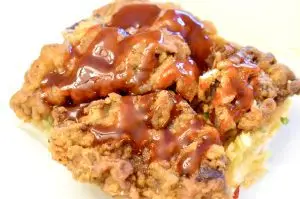How to Make Kimchi
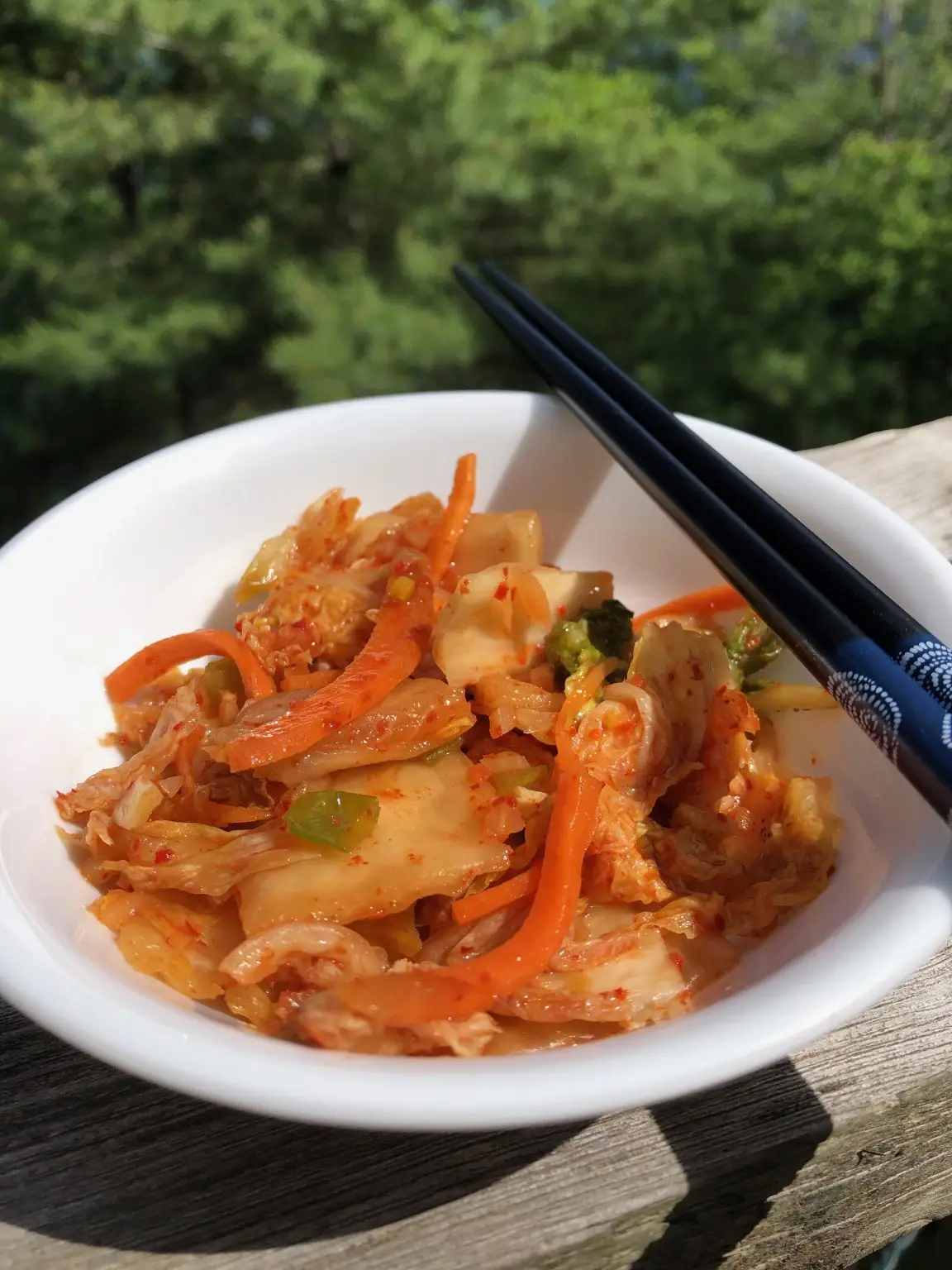
Despite the number of steps involved, making kimchi at home isn’t very hard! This mat kimchi is made from Napa cabbage cut into squares, carrots, garlic, onions, and seasonings, which are combined and lacto-fermented. Lacto-fermentation is the process by which bacteria break down the sugars in foods and form lactic acid. Lacto-fermented foods include yogurt, sauerkraut, kimchi, and pickles.* Lacto-fermented foods like this kimchi are very healthy, full of probiotics and fibre while being low in calories! Eat this on its own as a snack, as part of ban chan (traditional Korean side dishes), or on a rice or grain bowl!
- Prep Time1 hr 30 min
- Total Time1 hr 30 min
- Ready inSeveral Days
- Cuisine
- Course
- Cooking Method
- Equipment Needed
- Scale
- Fermentation Container
- Large Bowl
- Special Ingredients
- Coarse Gochugaru (Korean Chili Flakes) found in any Korean grocer or large pan-Asian grocery store
- 1 large Napa cabbage
- Kosher salt (amount varies)
- 2 heads of garlic
- 1 bunch of green onions
- 1 large or 2 medium carrots
- 1 2″x 2″ (5cmx5cm) piece of ginger root
- 2 tablespoons fish Sauce or tamari*
- 1 tablespoon white sugar
- 1 tablespoon-1/4 cup coarse gochugaru (Korean chili flakes) depending on your heat tolerance
Preparation
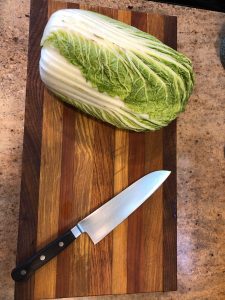
Cut cabbage into 4 pieces lengthwise.
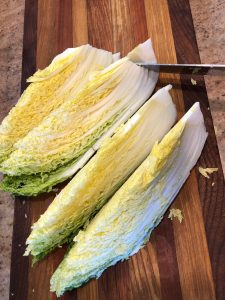
Trim off root end from each piece diagonally.
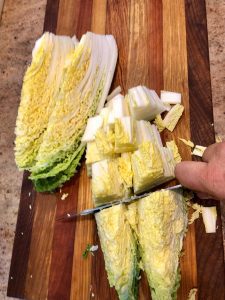
Cut quartered cabbage into pieces about 2 inches or 5 centimetres in size.
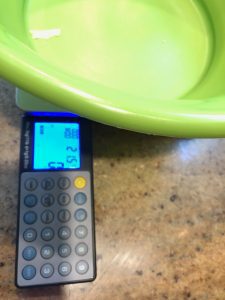
Take your largest mixing bowl and tare or zero it out on your scale.
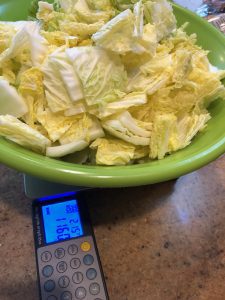
Put chopped cabbage into bowl on scale and write down weight. This cabbage weighed 1160 grams.
Tare or zero out a small bowl on the scale.
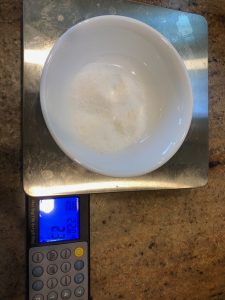
Add enough salt to bowl to reach 2% of cabbage weight.* In this case that is about 23 grams of salt.
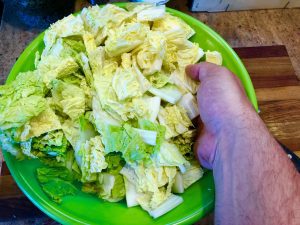
Mix the salt into the cabbage, massaging it into every leaf by hand.
Let stand for at least 1 hour. This draws out a lot of the water content of the cabbage, making for a less soggy end product.
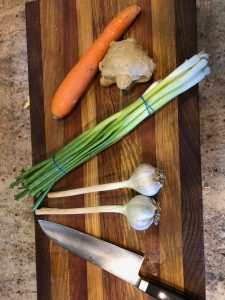
Meanwhile, prepare your other ingredients.
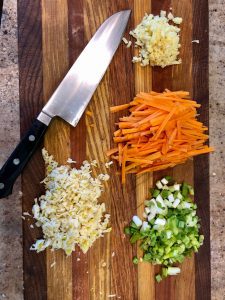
Mince garlic and ginger. Chop green onions into thick rounds. Peel carrot(s) and julienne them into matchsticks.
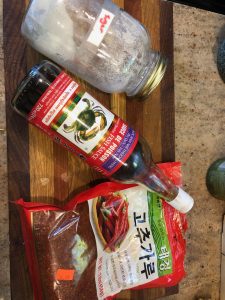
In a medium bowl, combine sugar, fish sauce, and gochugaru.
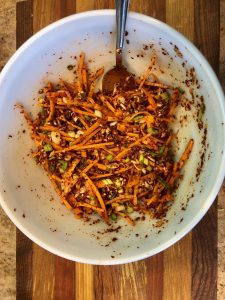
Mix in the cut vegetables and stir until well coated with seasonings.
Pour yourself a tea or a cocktail, you’re doing great!
After an hour has elapsed, give the cabbage a really good massage with your hands. Pour off any liquid that has accumulated in the bottom of the bowl.
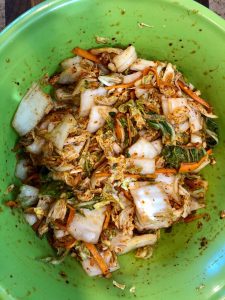
Mix the seasoned vegetables into the cabbage and massage everything together. Wear gloves for this if your hands are sensitive to hot peppers!
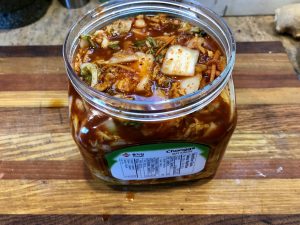
Pack the cabbage mixture very tightly into clean mason jars or a suitable container. Push and pack down so liquid bubbles up and begins to cover cabbage. I used an old store bought kimchi container.
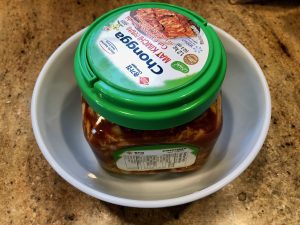
Put lid on container(s) and place in a bowl or casserole dish. Put in a shady spot on the counter and let sit for 3 days. Unscrew lid once a day (‘burp’) to release any pressure building up in the container.
The kimchi is now becoming an active ferment. You will notice bubbling, potentially some spillage (hence the reason it’s kept in a bowl), and definitely a strong smell emanating from the kimchi. If the smell is too strong, you can keep the ferment in a closet or the laundry room for the 3 days, just don’t forget about it!
After 3 days, push the kimchi back down in the jar as it will have likely pushed its way up. Move to the fridge where it will continue to ferment very slowly. It will stay good for many months, though it will become softer and intensify in flavour over time.
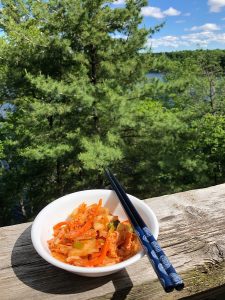
Enjoy your kimchi on its own or as part of a meal!
*https://www.healthline.com/nutrition/lacto-fermentation#3
*Use tamari instead of fish sauce if you would like to make this vegan
*Most ferments do well with a 2-3% salt content. You can use this calculator if you need help figuring out your salt to cabbage ratio: https://percentagecalculator.net/


